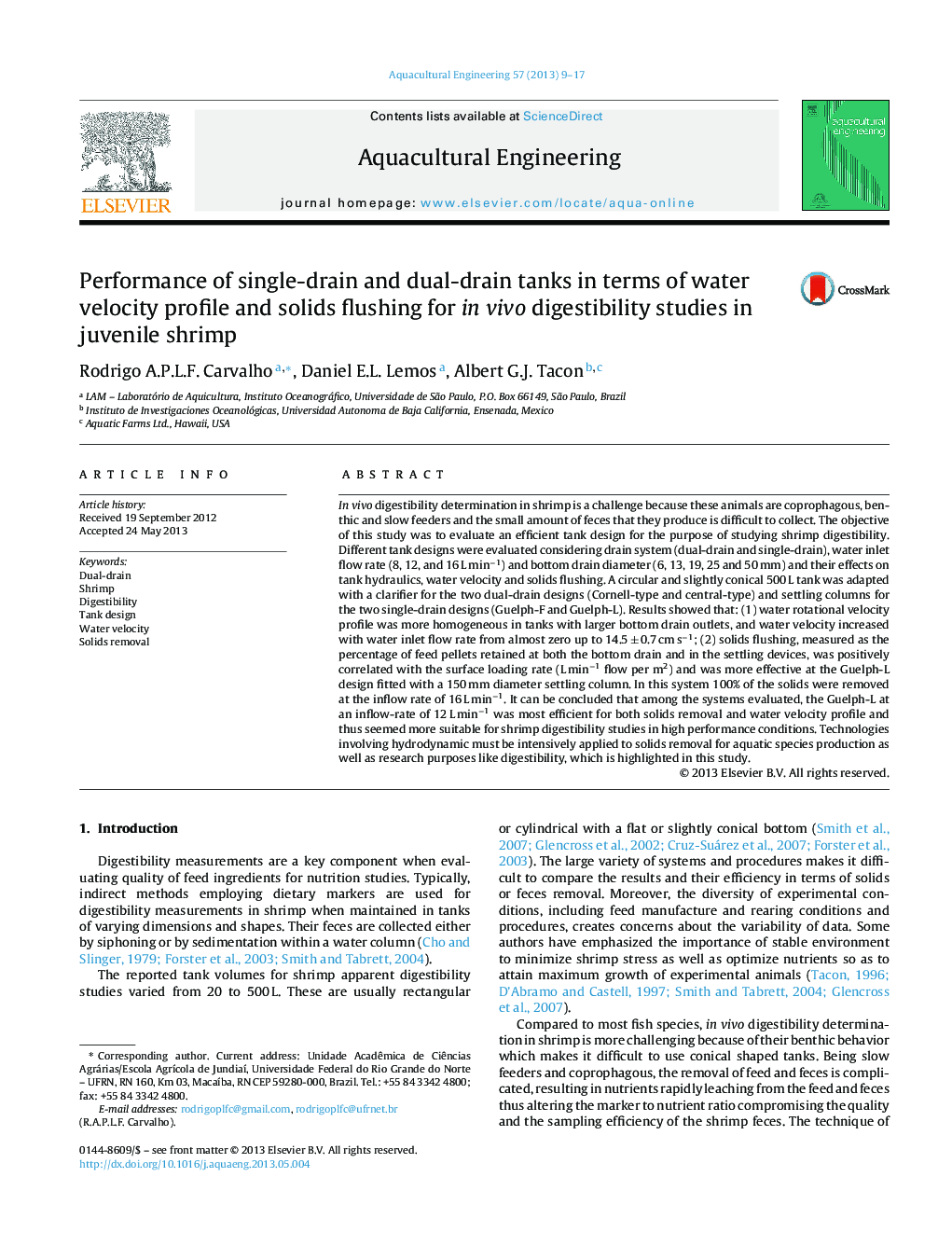| کد مقاله | کد نشریه | سال انتشار | مقاله انگلیسی | نسخه تمام متن |
|---|---|---|---|---|
| 6381360 | 1625713 | 2013 | 9 صفحه PDF | دانلود رایگان |
عنوان انگلیسی مقاله ISI
Performance of single-drain and dual-drain tanks in terms of water velocity profile and solids flushing for in vivo digestibility studies in juvenile shrimp
دانلود مقاله + سفارش ترجمه
دانلود مقاله ISI انگلیسی
رایگان برای ایرانیان
کلمات کلیدی
موضوعات مرتبط
علوم زیستی و بیوفناوری
علوم کشاورزی و بیولوژیک
علوم آبزیان
پیش نمایش صفحه اول مقاله

چکیده انگلیسی
In vivo digestibility determination in shrimp is a challenge because these animals are coprophagous, benthic and slow feeders and the small amount of feces that they produce is difficult to collect. The objective of this study was to evaluate an efficient tank design for the purpose of studying shrimp digestibility. Different tank designs were evaluated considering drain system (dual-drain and single-drain), water inlet flow rate (8, 12, and 16 L minâ1) and bottom drain diameter (6, 13, 19, 25 and 50 mm) and their effects on tank hydraulics, water velocity and solids flushing. A circular and slightly conical 500 L tank was adapted with a clarifier for the two dual-drain designs (Cornell-type and central-type) and settling columns for the two single-drain designs (Guelph-F and Guelph-L). Results showed that: (1) water rotational velocity profile was more homogeneous in tanks with larger bottom drain outlets, and water velocity increased with water inlet flow rate from almost zero up to 14.5 ± 0.7 cm sâ1; (2) solids flushing, measured as the percentage of feed pellets retained at both the bottom drain and in the settling devices, was positively correlated with the surface loading rate (L minâ1 flow per m2) and was more effective at the Guelph-L design fitted with a 150 mm diameter settling column. In this system 100% of the solids were removed at the inflow rate of 16 L minâ1. It can be concluded that among the systems evaluated, the Guelph-L at an inflow-rate of 12 L minâ1 was most efficient for both solids removal and water velocity profile and thus seemed more suitable for shrimp digestibility studies in high performance conditions. Technologies involving hydrodynamic must be intensively applied to solids removal for aquatic species production as well as research purposes like digestibility, which is highlighted in this study.
ناشر
Database: Elsevier - ScienceDirect (ساینس دایرکت)
Journal: Aquacultural Engineering - Volume 57, November 2013, Pages 9-17
Journal: Aquacultural Engineering - Volume 57, November 2013, Pages 9-17
نویسندگان
Rodrigo A.P.L.F. Carvalho, Daniel E.L. Lemos, Albert G.J. Tacon,